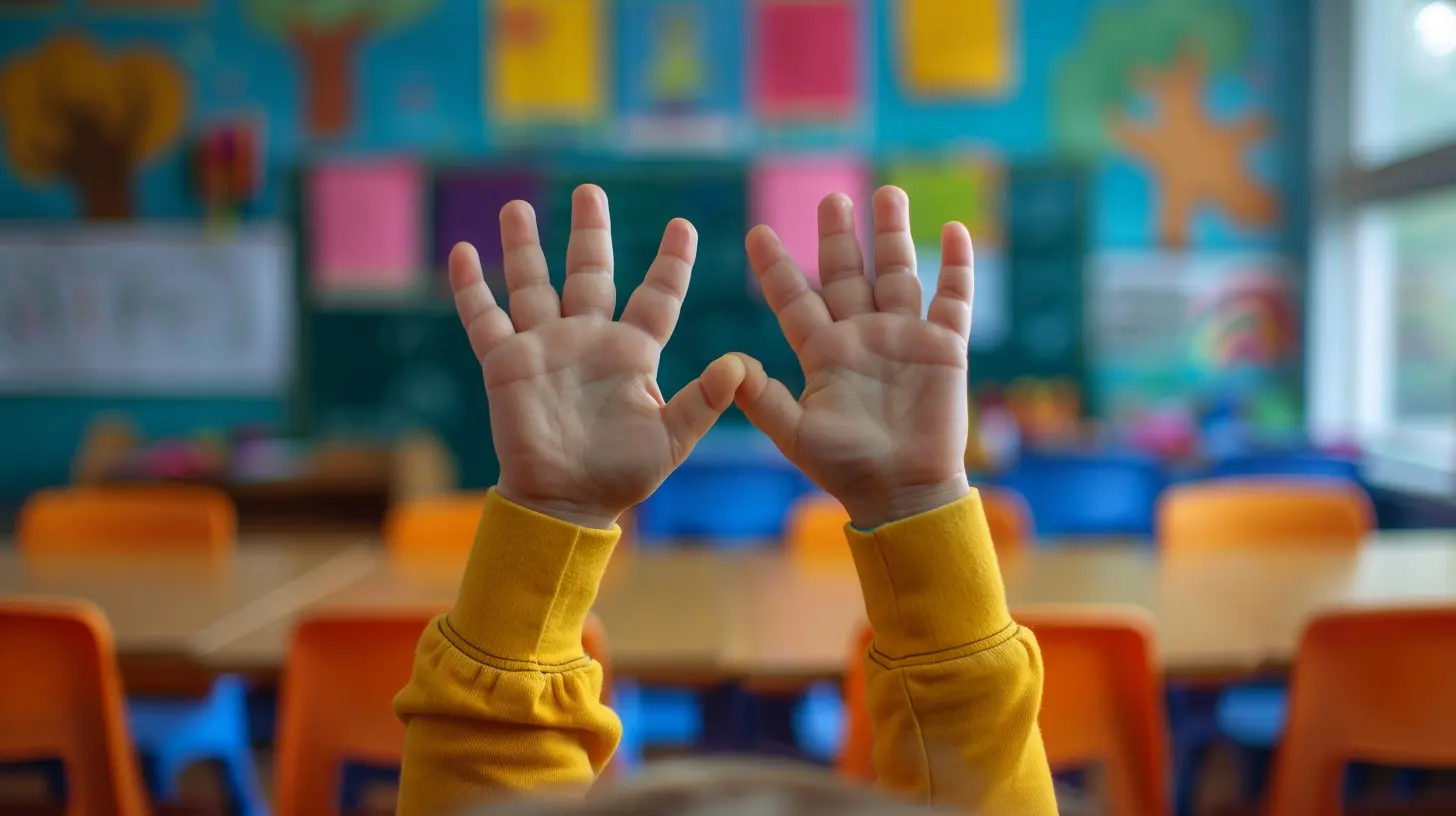The Role of Positive Reinforcement in Student Motivation
2 October 2025
Let’s face it—getting students motivated can sometimes feel like trying to teach a cat to do your taxes. It’s frustrating, time-consuming, and often feels like nothing is clicking. But what if I told you there’s one powerful tool that can make the process a whole lot smoother, more effective, and even (dare I say it) fun?
Yep, I’m talking about positive reinforcement.
Not only is it backed by research, but it also feels good—for both the student and the teacher. So, let’s dive into the nitty-gritty of how positive reinforcement plays a major role in getting students to stay motivated, engaged, and driven.
What is Positive Reinforcement Anyway?
At its core, positive reinforcement means giving a reward (not always material) when someone does something desirable. Think of it as giving a “high five” to your brain. It tells your brain, “Hey! That felt good. Let’s do it again.”In the classroom, this could be as simple as:
- Praising a student for a well-done assignment
- Giving out stickers or badges for participation
- Offering extra credit for consistent effort
- Allowing students to choose a fun activity as a reward
The key takeaway here? You're increasing the likelihood that a good behavior will be repeated. It’s the classic “carrot over the stick” mentality. Motivation goes up, and classroom morale follows.
Why Motivation Matters in Education
Before we dig deeper into how reinforcement boosts motivation, we need to talk about why motivation is such a big deal in the first place.Imagine trying to run a marathon without any reason to finish. No cheering crowd, no medal, no water stations—just an endless stretch of road. That’s what learning can feel like to students without motivation.
Motivated students:
- Put in more effort
- Stay focused longer
- Are more likely to take academic risks
- Show greater persistence when facing challenges
Bottom line? Motivation isn’t just a “nice to have”—it’s the fuel that powers student success.
The Psychology Behind Positive Reinforcement
Let’s get into the brain stuff for a second (don’t worry, no psychology degree required).Positive reinforcement taps into the brain’s reward system. When a student receives praise or a reward, the brain releases dopamine—the “feel good” chemical. This spike makes the student associate learning or behaving well with pleasure. And when something feels good, we naturally want to repeat it.
It’s kind of like training a puppy—but way more complex and way more rewarding (hopefully).
Different Types of Positive Reinforcement
Not all reinforcement is equal. What works for one student might not work for another. Here’s a quick breakdown:1. Verbal Praise
A simple “Great job!” or “I really liked how you explained that answer” goes a long way.It’s free, easy, and immediate. Plus, it reinforces both the behavior and the student’s self-esteem. Just make sure your praise is sincere and specific—kids can smell fake enthusiasm a mile away.
2. Tangible Rewards
These are the physical goodies. Think stickers, certificates, or small treats. These work especially well with younger students.But remember, over-relying on physical rewards can backfire. You want the student to eventually feel motivated by the learning itself—not just the treat.
3. Privileges and Choices
Giving students choices like “You can pick our next group activity” or “You can skip one homework question tonight” can be incredibly empowering.When students feel like they have some control, their intrinsic motivation (that inner drive) starts to grow.
4. Positive Contact with Home
Sending a positive note or making a quick call home to share a student’s success can be a game-changer. Not only does it reinforce the behavior, but it also strengthens the bond between home and school.Strategies to Use Positive Reinforcement Effectively
Alright, now we’re getting to the practical stuff. Here are some tried-and-true strategies to bring positive reinforcement into your daily teaching routine.Be Immediate
Timing is everything. Praise or reward the behavior as soon as it happens so students make the connection right away.Delayed praise = missed opportunity.
Be Specific
“Good job” is nice, but “I love how you broke that math problem into smaller steps—super smart strategy!” is so much better.Specific feedback helps reinforce exactly what the student did well.
Be Consistent
Reinforcement should be consistent, especially when trying to build a new habit or behavior. If you only praise sometimes, students won’t be sure what earns praise and what doesn’t.Think of it like a GPS—it only helps if it gives you clear, consistent directions.
Adjust Reinforcement to the Individual
Every student is different. One might light up at a sticker, while another may cringe. Get to know what motivates each student and tailor your reinforcement accordingly.Want a trick? Just ask them what makes them feel proud or excited about school. Their answers will surprise you!
Classroom Examples of Positive Reinforcement in Action
Let’s bring some of this to life with real examples.The Participation Tracker
Hang a chart with student names and give a sticker every time someone contributes to a discussion. As the stickers build up, so does their willingness to speak up.The Homework Hero Award
At the end of the week, shout out one student who consistently turned in quality homework. Bonus: let them have a say in a classroom activity.The Mystery Motivator
Pick one behavior you want to reinforce (like staying on-task). Tell students there’s a “mystery motivator” that will be revealed if the class does well. It could be extra recess, a dance break, or watching an educational video.Kids love the suspense, and it gets everyone invested.
The Fine Line: Avoiding Over-Reinforcement
Positive reinforcement is magical, but too much of a good thing can become, well, annoying.Here’s what to avoid:
- Don’t overdo the praise. If everything is “awesome,” nothing is.
- Avoid using rewards to manipulate or bribe. Kids are smart—they’ll pick up on that.
- Don’t ignore the process. Reinforce effort, not just outcome.
You’re not trying to raise reward junkies—you’re helping students internalize positive behavior and self-motivate over time.
How Positive Reinforcement Impacts Long-Term Motivation
Here’s the golden nugget: When used correctly, positive reinforcement doesn’t just boost short-term behavior. It fuels long-term motivation.Over time, students start to crave the intrinsic rewards—like the feeling of accomplishment or pride in their work—because they’ve been conditioned to associate learning with positivity.
You’re not just teaching them what to do—you’re training their brains to love learning. That’s the real victory.
Addressing Common Misconceptions
Let’s bust a few myths while we’re here.🧠 MYTH 1: “You’re just bribing them.”
Nope. Bribery is when you offer something to get someone to do something bad. Positive reinforcement is about encouraging good behavior that students can feel good about too.
🧠 MYTH 2: “It only works on little kids.”
Wrong again. Middle and high school students—in fact, even adults—respond to positive reinforcement. We all want to feel appreciated and recognized.
🧠 MYTH 3: “They’ll never do anything without a reward.”
Not true if you gradually fade external rewards and start emphasizing internal satisfaction and pride. You're training habits, not creating dependencies.
How Parents Can Use Positive Reinforcement Too
This isn’t just for teachers—parents can totally get in on the action.Here are a few things they can do at home:
- Praise effort over grades (“I’m proud of how hard you worked on this!”)
- Set up a fun family ritual for hitting academic goals
- Celebrate small wins (like reading a chapter or finishing a project early)
When school and home team up, the effects of positive reinforcement can multiply—big time.
Final Thoughts
Positive reinforcement is more than just saying “good job” or tossing a sticker on a paper. It’s about creating a learning environment where students feel seen, valued, and empowered to keep going—even when things get tough.When students feel supported and rewarded for their effort, their motivation doesn't just increase—it skyrockets. And when motivation is high, learning becomes not just possible—but unstoppable.
So, whether you're a teacher, a parent, or a student yourself, remember that a little positivity can go a long, long way. Let’s build classrooms (and homes) filled with encouragement, high fives, and the kind of reinforcement that helps students grow not just academically, but emotionally and mentally too.
Because at the end of the day? Kids don’t remember every test or assignment—but they always remember how we made them feel.
all images in this post were generated using AI tools
Category:
Student EngagementAuthor:

Olivia Lewis
Discussion
rate this article
1 comments
Camille Jennings
Absolutely loved this article! It’s so true that positive reinforcement can transform a student’s attitude towards learning. A simple “great job!” or a small reward can spark enthusiasm and encourage progress. It’s a reminder for all of us—celebrating those little victories makes a big difference in motivation! Keep up the great work!
October 13, 2025 at 12:32 PM

Olivia Lewis
Thank you so much for your kind words! I'm glad you found the article insightful. Celebrating those small victories truly can make a huge impact!


